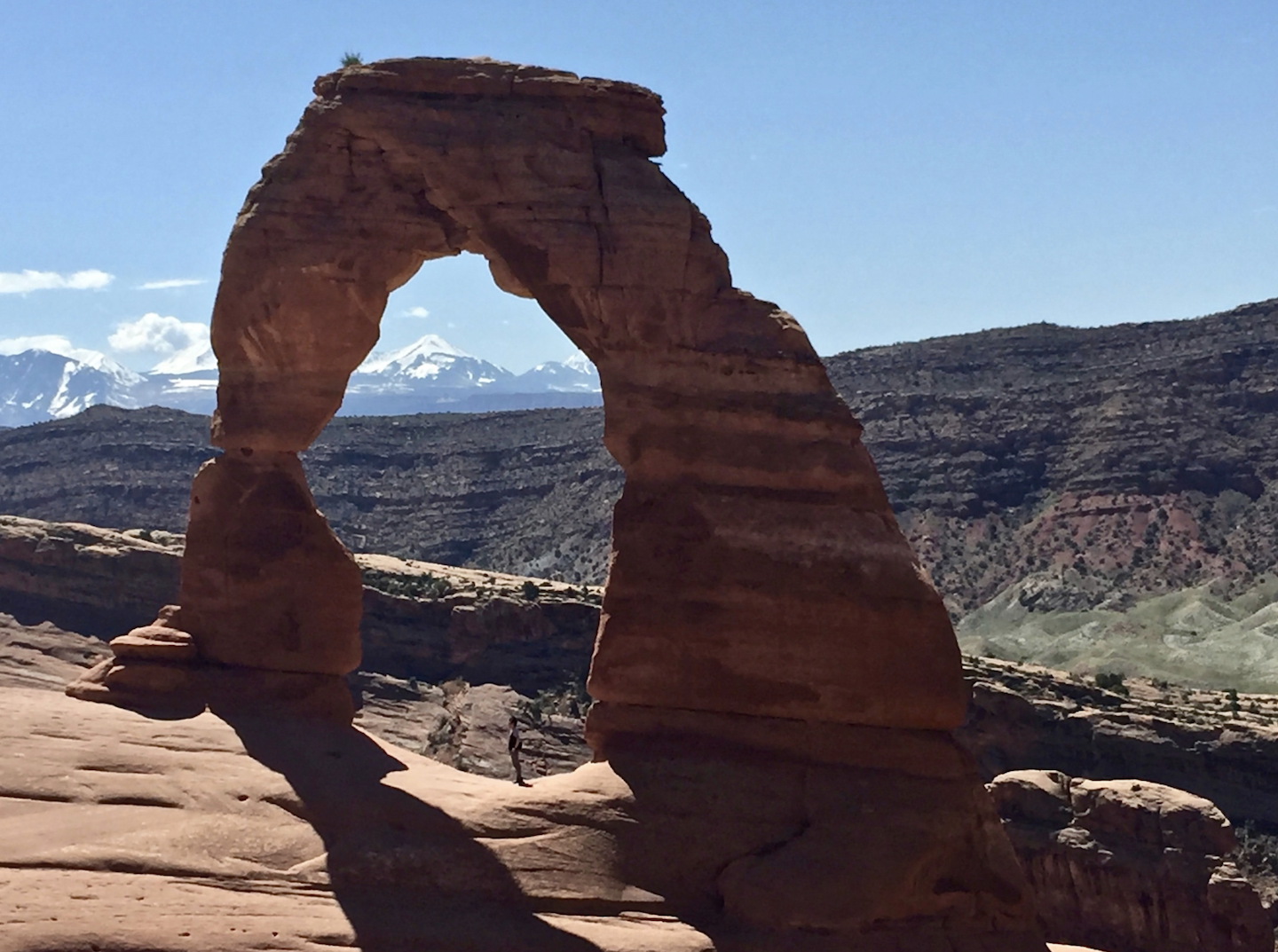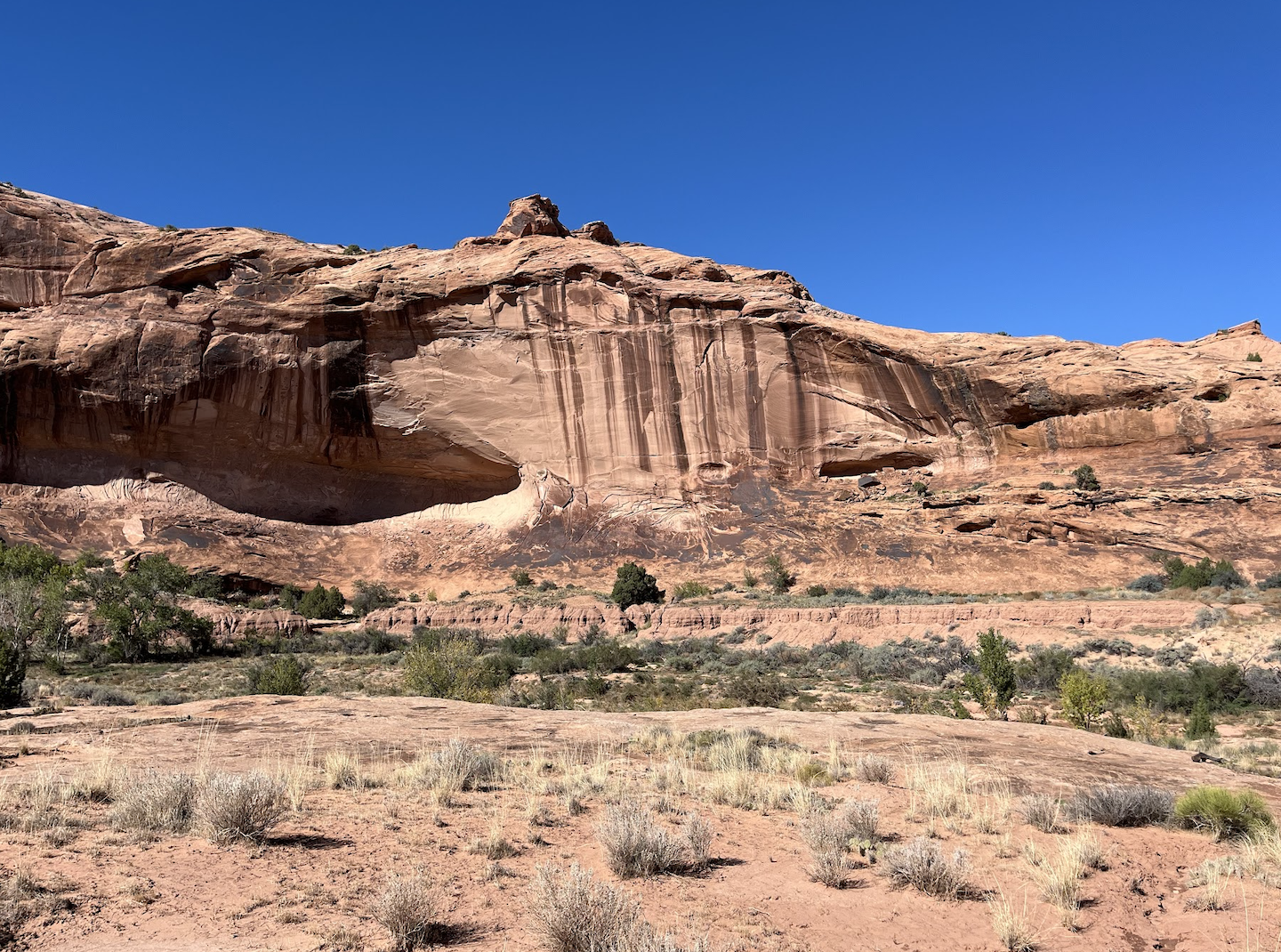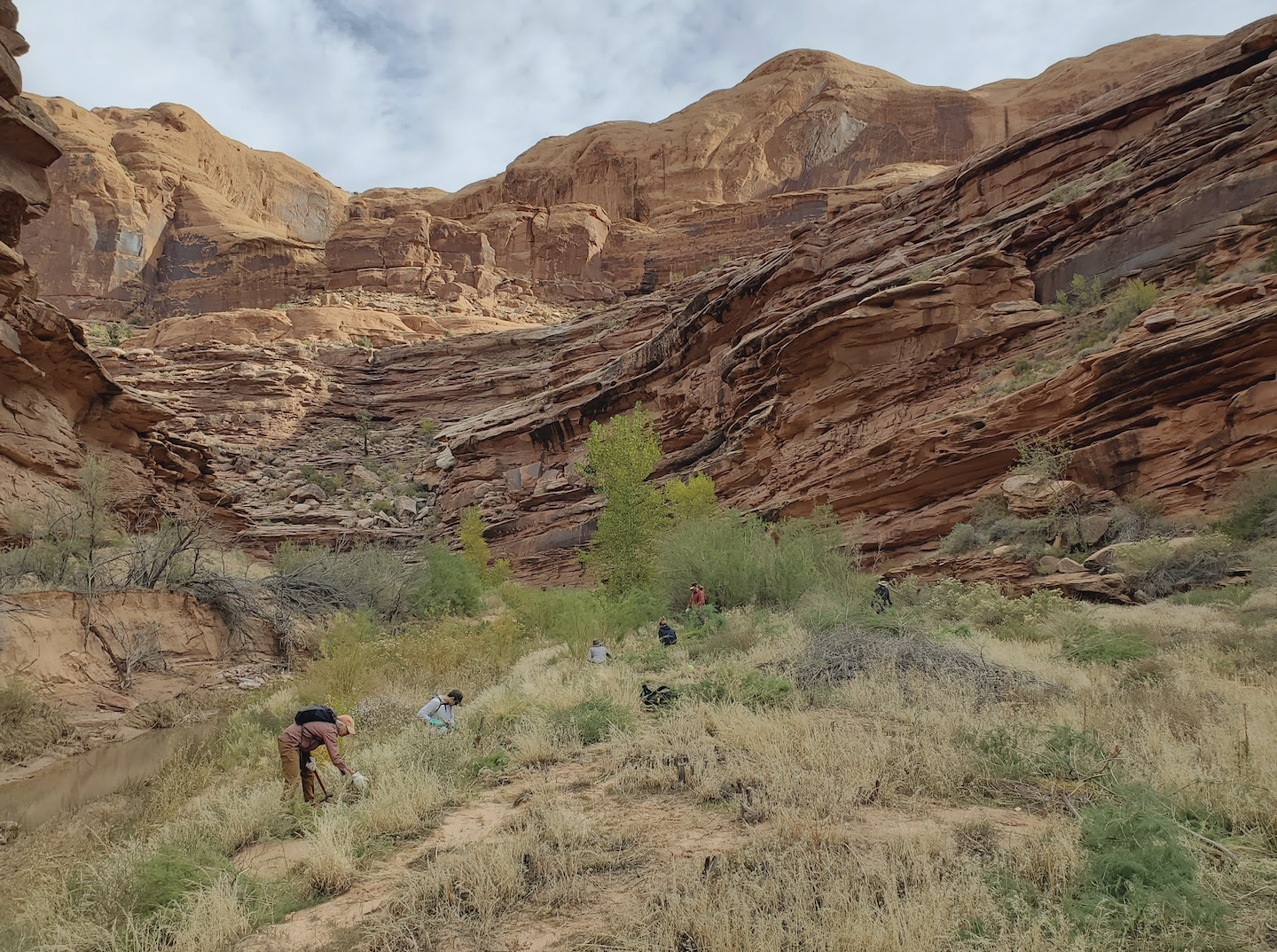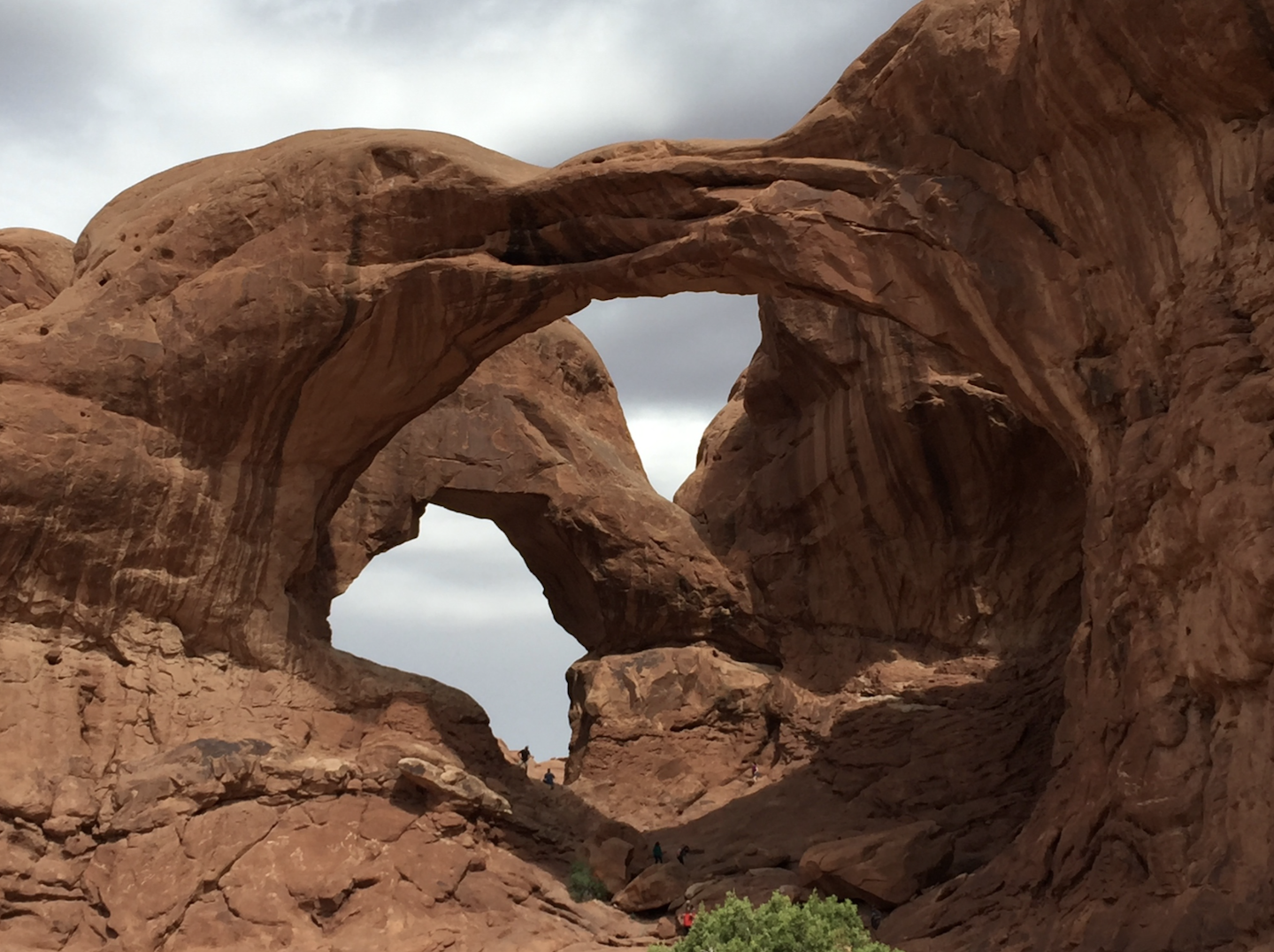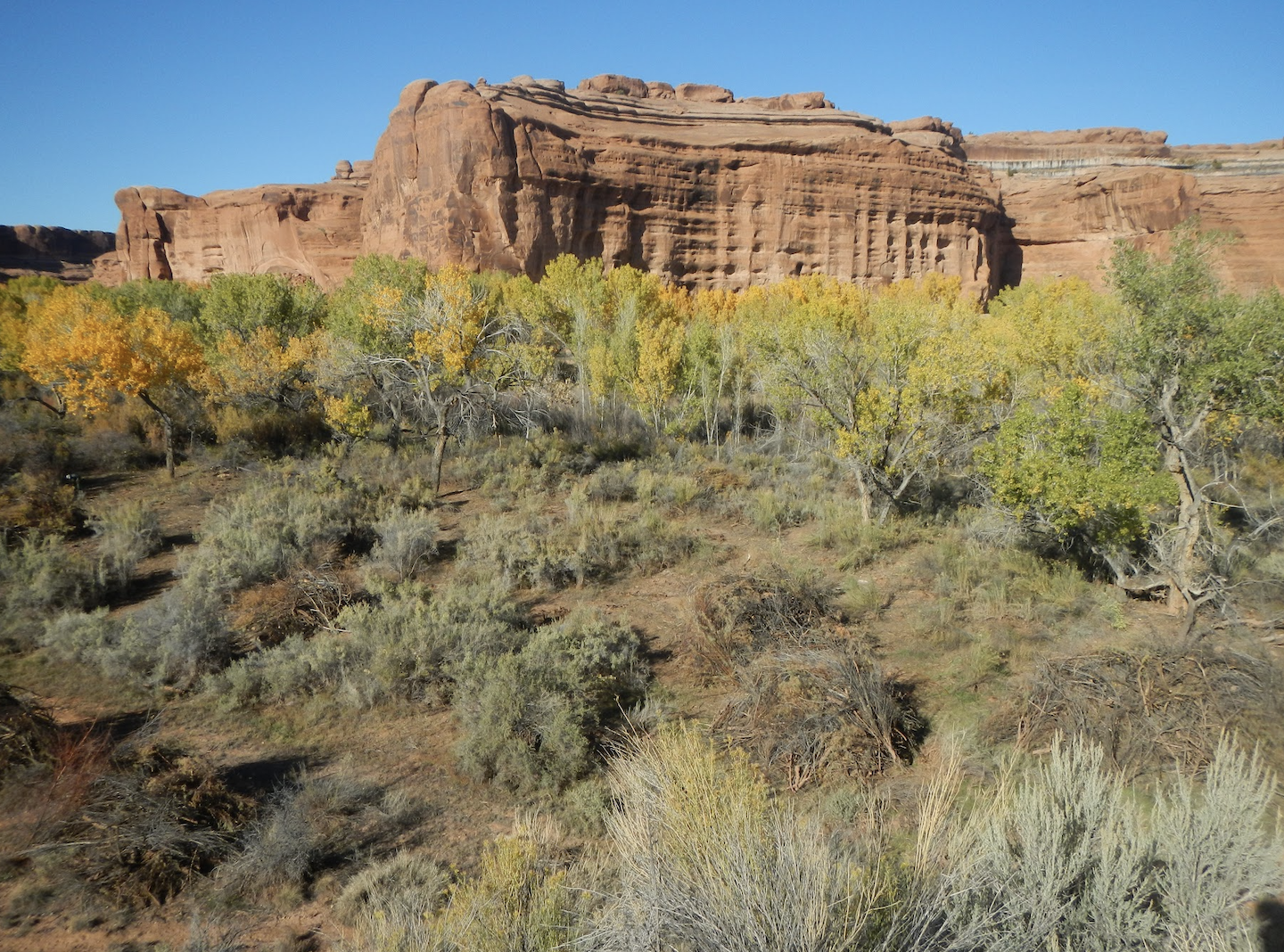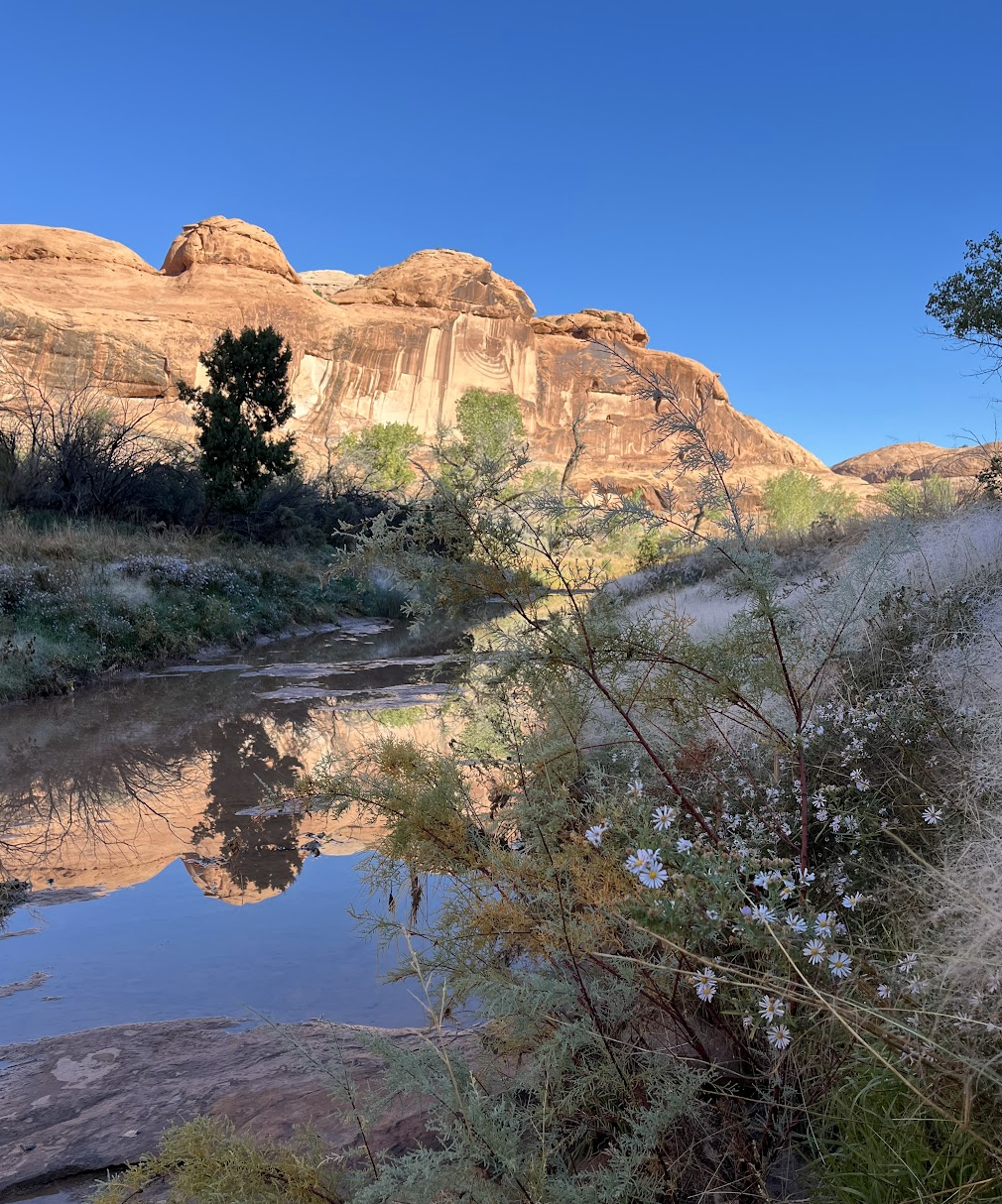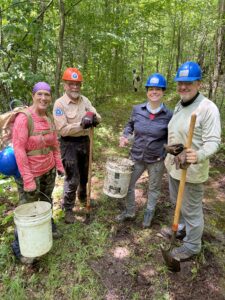Location: Moab, UT
Strenuous. ~6 mile daily hikes
Front country. Tent camping in a designated campground
This project continues the work of managing tamarisk in priority sections of Courthouse Wash, and removing trees or resprouts in past management areas.
Service Project Details
Tamarisk is an invasive small tree that is native to Eurasia and infested riparian areas throughout the southwest United States. Like other invasive species, tamarisk can outcompete native plants for limited resources like water and nutrients and change fire regimes by connecting ground and ladder fuels, but it can also alter stream dynamics by increasing sediment stability in a system that is adapted for a lot of sediment instability (think flash floods). The vegetation managers at Arches National Park (ARCH) have been removing this species from washes and riparian areas throughout ARCH for over 20 years with major efforts occurring in the early 2000s. More recent work has been isolated, primarily removing infestations around high-value vegetation like cottonwood trees, as fuel reduction to decrease wildfire risk.
In ARCH, there are two main drainages with sections of perennial water, with one being Courthouse Wash. Courthouse Wash carves through roughly 11 miles of the park and varies from a wide wash with an open cottonwood understory to nearly impenetrable vegetation in a narrow canyon with sandstone walls towering above. Courthouse Wash and its tributaries are filled with aquifer-fed springs and seeps, providing crucial water to animals and plants. Courthouse Wash is one of the park’s lifelines, and managing invasive species to maintain and increase its ecological integrity is an important goal for park managers.
This project focuses on managing tamarisk in priority sections of Courthouse Wash, and removing trees or resprouts in past management areas. Many of the tamarisk are still small and easily cut with hand tools (handsaws and loppers) and cut materials can be scattered in the wash. Once trees are cut, NPS personnel will carefully apply herbicide to the stumps to prevent regrowth. With training and oversight from NPS personnel, Wilderness Volunteers will be tasked with IDing tamarisk, using hand tools to cut trees, and moving cut material to designated locations.
Volunteers will need to be able to hike up to 5-6 miles daily, which could feel more like 6-7 miles because of the off-trail hiking, uneven terrain, and not being able to see where feet are going (dense vegetation). To access populations from one of the trailheads, there is a small section of “trail” that requires folks to be (safely) exposed to heights; folks need to be sure-footed. Some sections might be wet – waterproof type boots could be helpful. Volunteers must be comfortable working around professionally trained NPS personnel using herbicide and chainsaws. Even though volunteers will not be using herbicides, NPS personnel will give the crew an overview of the product and how to work around herbicides. Herbicide applications will be small and very targeted.
Volunteers would be staying at our Devils Garden admin site which has a tent area, a small pavilion, and a comfort station (small RV style-trailer with two flushing toilets and a shower).
Check out the photo gallery from previous projects in this stunning wilderness.
Project Leaders: Linda Altenhofen and Cathy Bricker
Agency Website
Itinerary:
Sunday, October 5th. The volunteer group meets at midday at a time/place TBD. The group will go through check-in, introductions, orientation, and will set up camp for the week.
Monday, October 6th. Workday.
Tuesday, October 7th. Workday.
Wednesday, October 8th. Day off.
Thursday, October 9th. Workday.
Friday, October 10th. Workday.
Saturday, October 11th. Break down camp, goodbyes, depart.
Nearest Cities
Moab, UT
Nearest Airports
Canyonlands Field Airport (CNY) – ~15 miles away
Salt Lake City International Airport (SLC) – ~234 miles away
Grand Junction Regional Airport (GJT) – ~110 miles away
Free Time Details
Hiking, mountain biking, viewing wildlife, exploring town, relax, etc.
Accommodations
Front country. Tent camping in a designated campground
Difficulty
Strenuous. ~6 mile daily hikes
Task Details
Bending, cutting, hauling, swinging, digging, throwing, pushing, lifting, kneeling, crouching, sloped terrain, sure footed, good balance, etc.
Equipment List
View Equipment List
